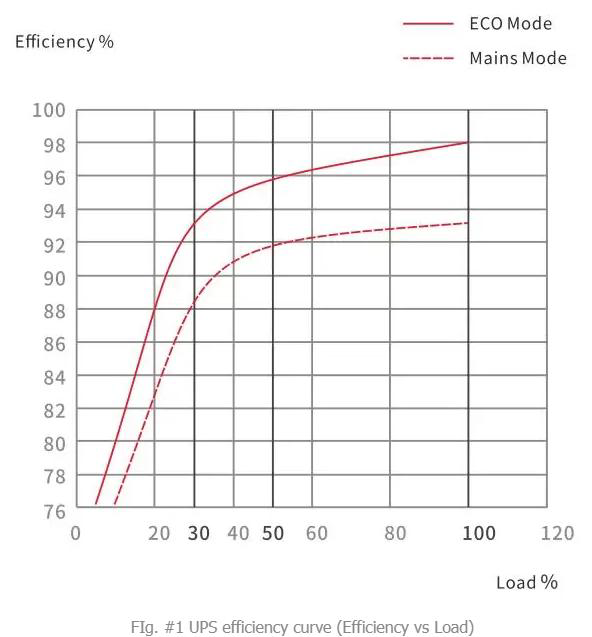UPS efficiency is a big deal. The more efficient your UPS, the cheaper it is to run. As energy costs continue to increase, we’ve seen that businesses and organisations across multiple sectors are now looking for ways to increase their energy efficiency and subsequently reduce their energy bills. One of the ways to do this is by investing in an efficient uninterruptible power supply (UPS).

What is UPS efficiency?
The efficiency of an uninterruptible power supply is based on how much of the original incoming power is needed to operate the UPS.
As an example, a UPS that scores 90% for efficiency will use 90% of the original input for powering the load and the connecting systems. Then, the remaining 10% of energy will simply go to waste whilst running the UPS.
For a UPS, higher efficiency equates to lower losses of electrical energy in terms of heat output; low-efficiency UPS systems often require more air conditioning to help keep the surrounding temperatures safe.
When comparing UPS systems and calculating the efficiency of uninterruptible
power supply, there are two things you need to keep in mind:
The energy efficiency of a UPS system is influenced significantly by its design. On paper, double-conversion systems should be less efficient than single-conversion systems, for example. However, manufacturers now produce UPS systems with a variety of modes that can deliver higher efficiency rates than ever before.
You will also find that energy efficiency increases when using a larger UPS. This is simply because the support power required to power the control electronics and other components is a much smaller proportion of the UPS’s total capacity.
In general, the efficiency of uninterruptible power supply has improved significantly over recent years. Thanks to a series of technological advances, principally the development of transformerless UPS systems.
The difference in operating efficiency between transformer-free UPS and transformer-based UPS designs can be as much as 5-6%. Although this divergence is less for the latest transformer-based models. Transformerless UPS have a flatter efficiency curve too. It can achieve high efficiency (>95%) at 25% load all the way through to full load.
How does ECO operating mode impact the efficiency?
How to calculate UPS efficiency
UPS efficiency is measurable and can be expressed as a ratio or percentage. You can measure it by using the following formula:
UPS Efficiency = UPS Output / UPS Input * 100%
Energy efficiency is about saving money. If you’re handy with a calculator and have access to the figures you need, you can use this equation to calculate the annual running costs of operating your UPS at different efficiency levels.
(UPS kW Rating x Load % ) / UPS Efficiency) – (UPS kW Rating x Load % ) x (24×365) x kWh Price
Why is efficiency important to ups?
It’s all about money.
The more efficient a UPS is, the cheaper it will be to run. Many of the UPS installations are designed to be in place for over ten years, during which you can make significant savings (or experience high extra costs).
It’s not just about power consumption saving. Low-efficiency UPS systems produce more heat, which needs to be cooled by an air conditioning system.
The more efficient your UPS, the lower your air conditioning costs, and your utility power bill.
Modern UPS systems are highly efficient, delivering real-life performance that was unheard of even ten years ago. In the past, UPS performance levels rarely achieved 90%, and certainly not the 95%+ efficiency that operators can expect today.
New technologies used in UPS transformer-based systems and innovations such as ‘transformerless’ UPS systems are pushing the boundaries of what’s possible, and customers are benefiting.
categories
recent posts
scan to wechat:everexceed
